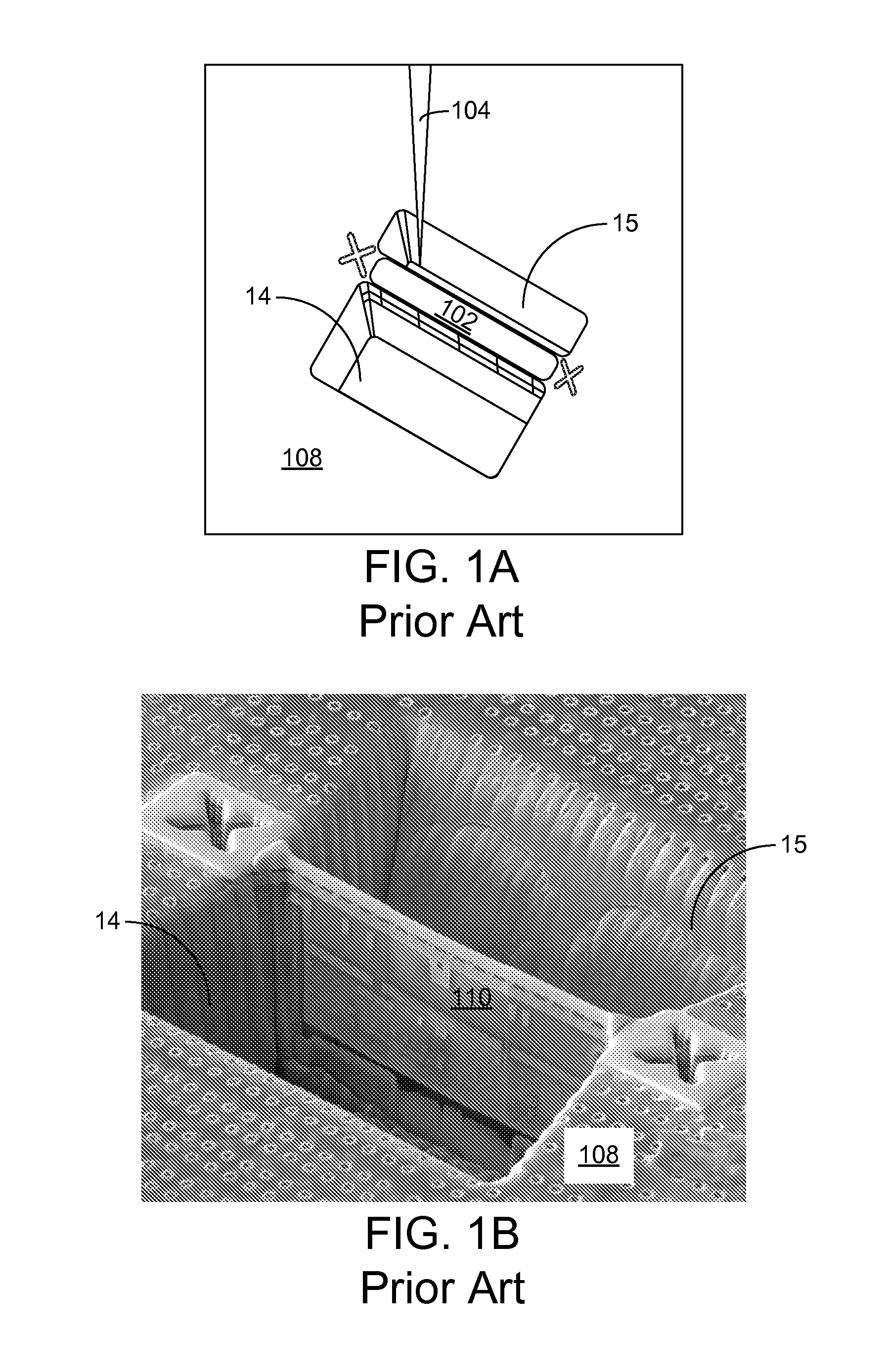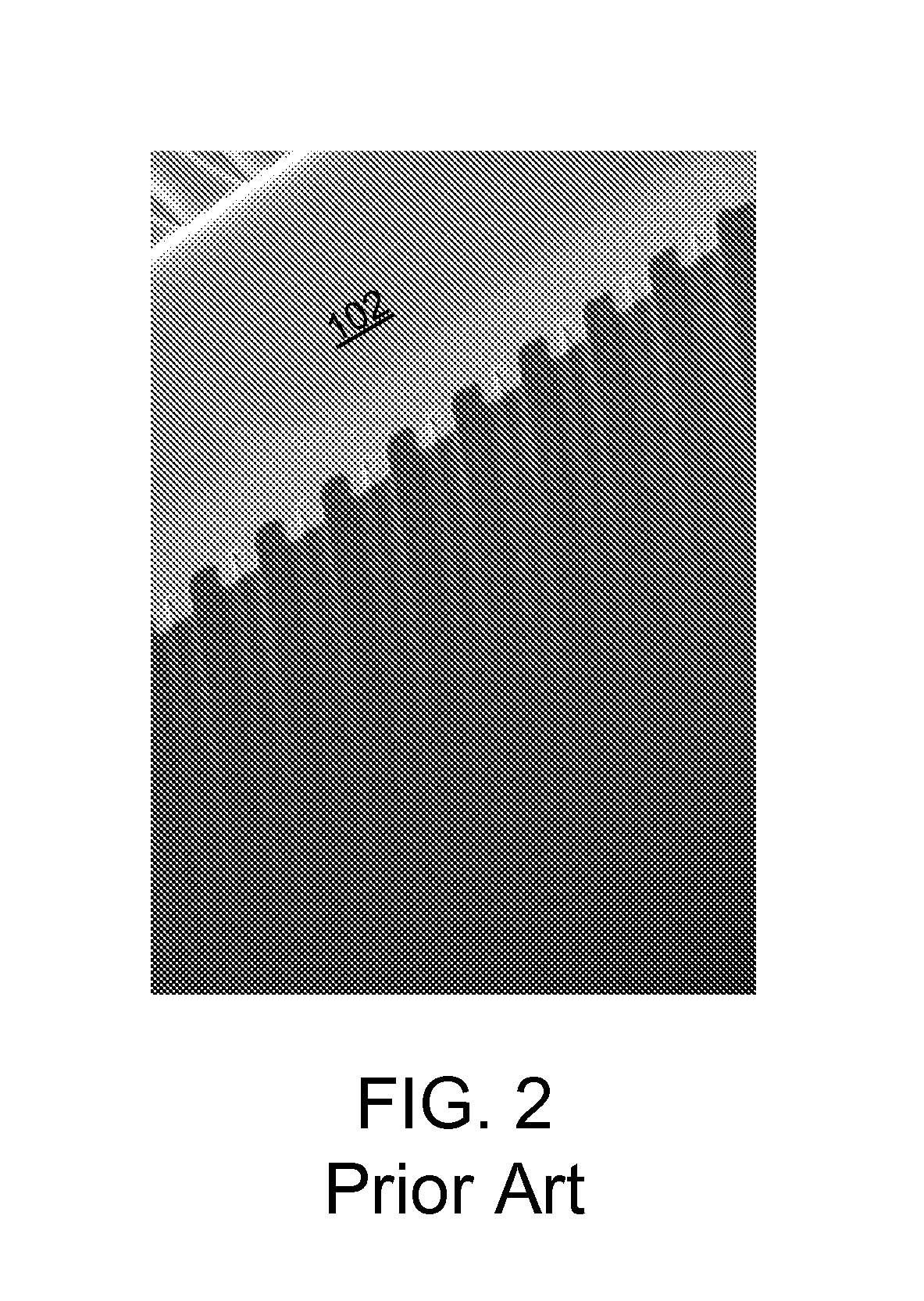Method for preparing samples for imaging
a technology of electron beam etching and electron microscopy, which is applied in the direction of instruments, mass spectrometers, beam deviation/focusing by electric/magnetic means, etc., can solve the problems of measurement error that may not be tolerable, decoration produced by electron beam etching between layers of different types of dielectrics is inadequate for most applications, and observer cannot readily observe the boundary between those layers. , to achieve the effect of reducing or eliminating curtaining, reducing or
- Summary
- Abstract
- Description
- Claims
- Application Information
AI Technical Summary
Benefits of technology
Problems solved by technology
Method used
Image
Examples
Embodiment Construction
[0057]Embodiments of the invention provide a method and apparatus for creating a trench or other structure in a portion of a work piece using a focused ion beam and a deposition precursor gas. Cross sections prepared using embodiments of the invention provide improved clarity of the exposed features. FIB milling of some samples can distort the edges of the feature being exposed by the milling operation. Cross sections prepared using embodiment of the invention provide exhibit reduced artifacts and so more accurately represent the results of the fabrication process that created the structures.
[0058]The deposition gas is thought to decompose to fill indentations created by uneven milling rates, such as different etch rates of different materials. By continuously filling holes or other indentations as they are being created by milling, the resulting cross section is smoother and exhibits less distortion than would be produced otherwise, to provide a better representation of the actual ...
PUM
| Property | Measurement | Unit |
|---|---|---|
| current | aaaaa | aaaaa |
| current | aaaaa | aaaaa |
| beam current | aaaaa | aaaaa |
Abstract
Description
Claims
Application Information
 Login to View More
Login to View More - R&D
- Intellectual Property
- Life Sciences
- Materials
- Tech Scout
- Unparalleled Data Quality
- Higher Quality Content
- 60% Fewer Hallucinations
Browse by: Latest US Patents, China's latest patents, Technical Efficacy Thesaurus, Application Domain, Technology Topic, Popular Technical Reports.
© 2025 PatSnap. All rights reserved.Legal|Privacy policy|Modern Slavery Act Transparency Statement|Sitemap|About US| Contact US: help@patsnap.com



